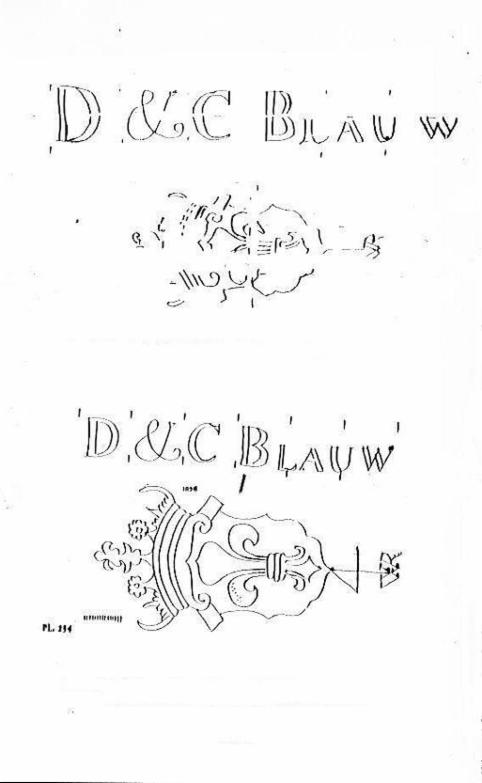The Authentic Magic Flute Libretto: Mozart’s Autograph or the First Full-Score Edition?
Michael Freyhan
Scarecrow Press 2009 ISBN 978-0-8108-6657-7
Illustration: Pamina (right) kneeling before Sarastro in the 1st Act Finale of The Magic Flute, no. 8, scene 18. Copper engraving (undated), J.C.Zimmer, Hamburg. Universität Hamburg (Zentrum für Theaterforschung/Hamburger Theatersammlung). It shows the text used at the Hamburg première of The Magic Flute (1793) and subsequently in the Simrock first full score edition (1814). In the Hamburg production, where the opera was divided into four acts, this scene was in the second act ("Zweÿter Aufzug").
This website provides an update to the book published in 2009. The first full score edition of The Magic Flute (Simrock, Bonn 1814) shows many deviations from the libretto text copied by Mozart into his autograph and from that of the printed libretto (Alberti 1791). These deviations appear closely linked to Mozart’s music, with significant words perfectly timed to find expression in melody and harmony.
The source of the first full score edition was a manuscript sold by Mozart’s widow, Constanze, to the electoral court in Bonn, following negotiations initiated immediately after Mozart’s death. The book investigates grounds for the possible authenticity of this non-autograph source sent by Constanze, with particular focus on the earliest copy of the opera, that made by Süssmayr under Mozart’s personal instructions even before the orchestration had been completed.
Updates/Errata corrects all currently known errors. The layout of the libretto comparison and English translation (Appendix B) proved incompatible with the book’s page size and is given on this website in an improved version.
A significant new source was discovered by the author after the book was published, giving the text of the correspondence between Gottfried Weber and the publisher Nicolaus Simrock (Wilhelm Altmann, “Aus Gottfried Weber’s brieflichem Nachlass”, Sammelbände der Internationalen Musikgesellschaft 10 (1908-9), 477-504). Weber reviewed the first full score edition of The Magic Flute in the Allgemeine Musikalische Zeitung of 13 September 1815, reporting Simrock’s assurance that it was based on a manuscript “obtained from Mozart himself” and was “in accordance with Mozart’s own wishes”. He did not mention, however, that Simrock also told him, in a letter of 31 May 1815, that “The German text which I underlaid was improved here and there at the Hamburg Theatre.” This has necessitated a re-assessment of the status of the libretto in the first full score edition (see Michael Freyhan, "Mozart's Text Setting in the Magic Flute", Acta Musicologica, vol. LXXXIII - 2 (2011), 245-59).
Three articles relating to the authenticity of the first full score edition text were published by the author, predating the book:
1) “Toward the Original Text of Mozart’s Die Zauberflöte”.Journal of the American Musicological Society, XXXIX, 2, (1986), 355-80.
2) “Rediscovery of the 18th Century Score and Parts of Die Zauberflöte Showing the Text used at the Hamburg Première in 1793”. Mozart-Jahrbuch 1997, 109-47.
3) “Mozart: The First Full Score Edition of The Magic Flute”. Musical Opinion, March-April 2006, issue no. 1451, 20-26.
CONTACT
email: mfreyhan@mail.com
tel/fax: +44 (0)208 459 6825
UPDATES / ERRATA
CHAPTER 1
8 n10 999 ZM [not 99 ZM]
CHAPTER 2
29, 3 lines up. The intimacy [New paragraph]
35, line 7 Some of the 'refinements' [New paragraph]
35, line 14 Be it on biblical [New paragraph]
CHAPTER 3
43, 16-17 lines up [Add line-space between] "on the same day" [and] "Vienna 5ta Novembris"
8-9 lines up [Add line-space between] "of the very same day" [and] "Sonntags den 6.d.M."
44 [Add line-space between] "of his best friends" [and] "Ankündigung einer Cantate"
45, lines 3-4 [Add line-space between] "would mourn him" [and] "Kaum sind einige Wochen"
line 15 [Add italics] Europe
CHAPTER 4
78, line 6 "electoral court in June and September 1793. One month later the Berlinische Musikalische Zeitung announced the forthcoming publication of Neefe's Magic Flute piano arrangements (26th October 1793, page 153), which suggests that they were probably composed at around this time." [Add the above conclusion to the paragraph]
87, line 6 [New
paragraph] Lines 6 and 7 of the Ode in Beethoven's autograph read
Was die Mode streng getheilt Alle Menschen werden Brüder
See Preface by Jonathan Del Mar to Bärenreiter edition of the 9th Symphony (BA9009) c1996. Under "Specific Problems of the Finale: Orthography and Punctuation of Schiller's Text" Del Mar compares four different versions of "An die Freude" published between 1786 and 1812 (first complete Schiller edition), suggesting that Beethoven probably used the 1812 edition, or its identical reprint of 1818.
I
am grateful to Peter Freyhan for drawing my attention to these alternative Schiller texts.
97, 4 lines up "Documents" [New paragraph]
CHAPTER 6
113, lines 13 and 17. [Add line space below lines 13 and 17]
114, 5 lines up Nachrichten von und für Hamburg
114, 4 lines up (see pp. 80-81) [Not 81-82]
135. lines 21-33 Right-hand column. Line breaks as follows:
O tausend Dank dafür.O! dass mir doch ein Ton gelänge,
der euch den Dank des Herzens sänge;
der meine Adern all' durchfliesst in
Freudenthränen,
[S120] [NMA] 144-45 (Ich danke euch
dafür.
O wenn ich doch im Stande wäre,
Allmächtige, zu eurer Ehre,
mit jedem Tone meinen Dank
zu schildern)
136, line 10, right-hand column [line space below] "[NMA] 253"
136, line 11, left-hand column "Gönner! Freunde! Lebet ewig wohl.-" [one line higher]
137, line 1 "A common" [New paragraph]
140, n41, lines 1-2 The reference ends: "Biographische Miszellen, Mitteilungen der ISM vol. 39 (1991), 119–20"
141, n47, line 7 999 ZM [not 99 ZM]
CHAPTER 7
143, 5 lines up "The report" [New paragraph]
149, line 1 "If Mozart's" [New paragraph]
154, n16, line 5 “im Jullius”, Underlined by Mozart. The comma stands outside the quotation
154, n16, line 6 “zur Oper. die Zauberflöte" Underlined by Mozart.
CHAPTER 8
159, lines 10-15
In accordance with the decree of 11th March 1976, effective 1st May 1976, concerning the organization of state archives in the German Democratic Republic the Staatsarchiv is now the proper, conclusive authority for the archive of your publishing firm. It follows from this that
- the archive property is to be transferred to the Staatsarchiv as decreed . . .
‑ after the transfer the Staatsarchiv will look after the business of archival tasks, including those that guarantee order and security as well as availability . . . and thus also the interests of your publishing house."
lines 21-26
Nach der am 1.5.1976 in Kraft getretenen VO [Verordnung] über das staatliche Archivwesen der DDR vom 11.3.1976 ist das Staatsarchiv Leipzig jetzt das zuständige Endarchiv für Ihren Verlag. Daraus ergibt sich, dass
- das Archivgut im Sinne der VO an das Staatsarchiv abzugeben ist . . .
- nach der Übernahme das Staatsarchiv die archivarischen Aufgaben, auch die der Ordnung und Sicherheit sowie der Benutzbarkeit . . . gewährleisten und dabei auch die Belange Ihres Verlages wahren wird.
APPENDIX A
182, 5 lines up [Add] That he did so was confirmed only recently. On 7 December 2004 an album was sold at Sotheby's, London (Lot 87), described in the Catalogue as "Album amicorum of Carl Ludwig Giesecke (1761-1833), containing paintings, drawings, engravings, and autograph inscriptions by Schikaneder and others from Mozart's circle" (see http://www.sothebys.com/app/live/lot/LotDetail.jsp?g=Text+%26+Images&count=20+Lots+per+page&sort=http%3A%2F%2Fbrowse.sothebys.com%2F%3Fcat%3D1%26dp%3DBooks%2Band%2BManuscripts%26event_id%3D27013%26g%3D1%26hp%3D%26hpc%3D%26i%3D1%26is_past%3D1%26nb%3D1%26q%3D%26sale_id%3DL04412%26slabrowsesort%3Dlot_sort_number%26u1%3Ddp&sale_number=L04412&live_lot_id=87). In the Catalogue Note attention is drawn to entries from Vienna in 1804. Giesecke's presence in Vienna in that year has not been previously recorded. There are also entries from both Greenland and Ireland, the last dated 1828. The suggestion, made in the Catalogue, that this was the album described "in an early catalogue of Giesecke's effects as "Ein Stammbuch mit einigen Gemälden"" (i.e.the one sold in Vienna in 1802) is unlikely, given the late entries. Bearing "the discreet
numbering "No 4" in pencil (on a flyleaf)", it may have been one of
the five albums sold in Dublin in 1834. I am grateful to Dr. Alfred Whittaker for alerting me to this recent sale of a Giesecke album.
189, line 2 "kann . . . . " [Add] (p. XX)
APPENDIX B
196, lines 2-3 "10th August 2009." [Not 2008]
237, bottom two lines [Add] "Zertrümmert seyn auf ewig alle Bande der Natur," in right (Mozart's autograph) column. I am grateful to Peter Freyhan for pointing out this omission.
238, 11 lines up [Add] "All ties of nature be destroyed forever," in right (Mozart's autograph) column.
246 [S] 255 Move to left column (Simrock first edition), next to "No. 21"
-------------------------------------------
PHOTOS
Photo 8a(top) should show only two lines, ending after 18 bars of music, as captioned. The word "Gefühl" appears at the end of the extract, i.e. in bar 18, as stated on p. 75.
________________________________________________________________

Photo 8a
(top) Tamino’s Aria, Act I. No. 3, bars 1-18. Wienbibliothek im Rathaus MH 10632.
(bottom) Autograph letter by C.G.Neefe (18th December 1792). Staatsbibliothek zu Berlin – Preussischer Kulturbesitz, Musikabteilung mit Mendelssohn-Archiv Mus.ep. Chr. G. Neefe 1.
________________________________________________________________
Photo 8b
[Add] (bottom) Monumenta Chartae Papyracae Historiam Illustrantia, vol. I, ed.E.J.Labarre, Watermarks by Edward Heawood. The Paper Publications Society (1950), plate 254, no.1828.
________________________________________________________________

Photo 8b
(top) D&C Blauw watermark pp. 1-4 and 9-12. Wienbibliothek im Rathaus MH 10632. Tracing by Dr. Erich Duda.
(bottom) Monumenta Chartae Papyracae Historiam Illustrantia, vol. I, ed.E.J.Labarre, Watermarks by Edward Heawood. The Paper Publications Society (1950), plate 254, no.1828.
________________________________________________________________-------------------------------------------
BIBLIOGRAPHY OF RARER SOURCES
263, 1 line up Cornet, Julius [Add "Julius"]
Lorenzo da Ponte [New line and change to "Da Ponte, Lorenzo"]
INDEX
Badener Zeitung 154 [Not 153]
Duda, Erich 74, 133, Photo 8b [Add "Photo 8b"]
Hutton, (Miss), daughter of Karl Ludwig Giesecke’s executor 181, 187 [Add 181]
Langerhans (Mad.) 81, 116 [Omit 117]
Tausig, Paul 154 [Not 153]
Wiener Zeitung 5, 43-45, 66 [Omit 68]
-------------------------------------------
APPENDIX B
Michael Freyhan
London, 2 October 2016